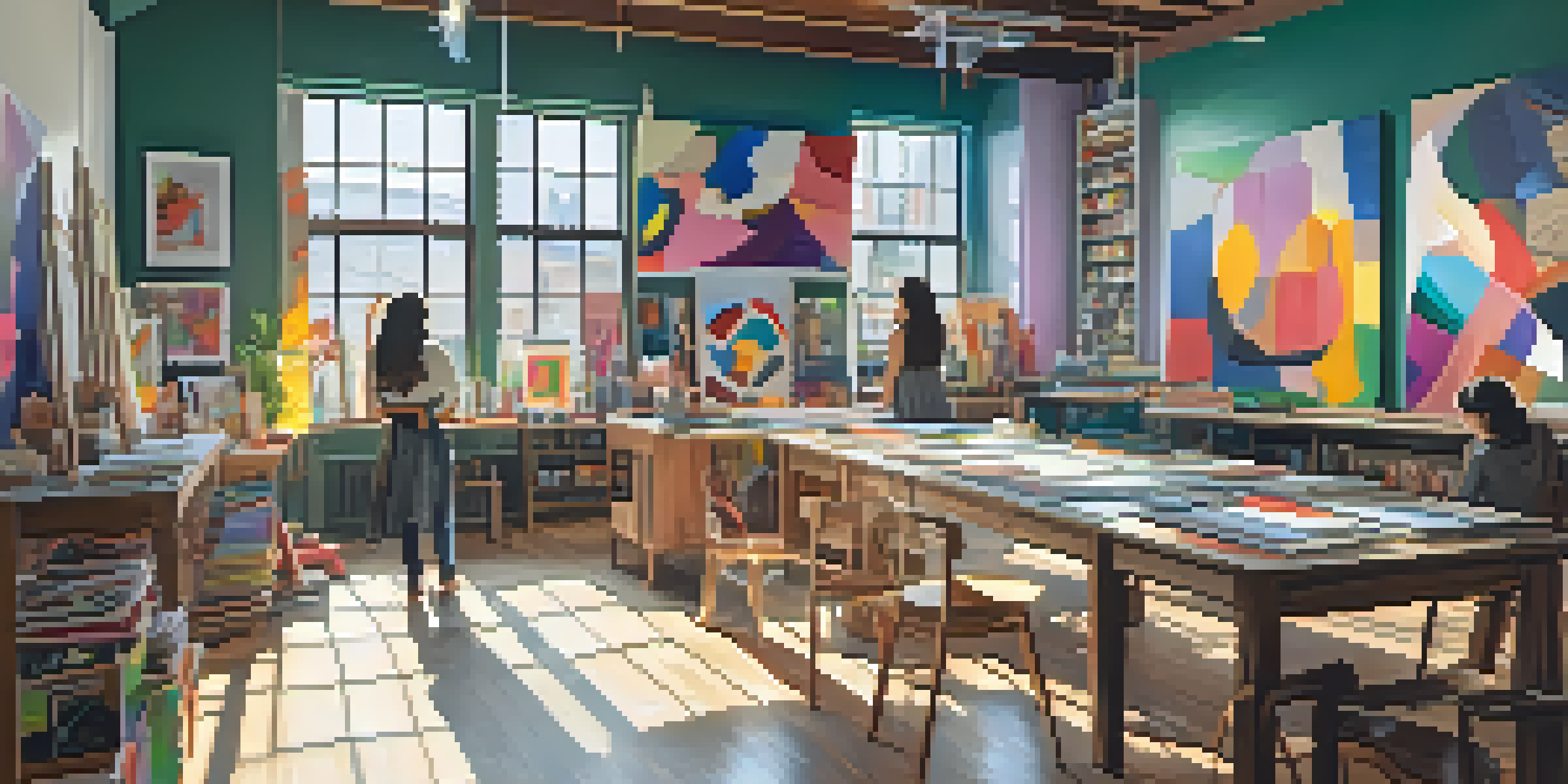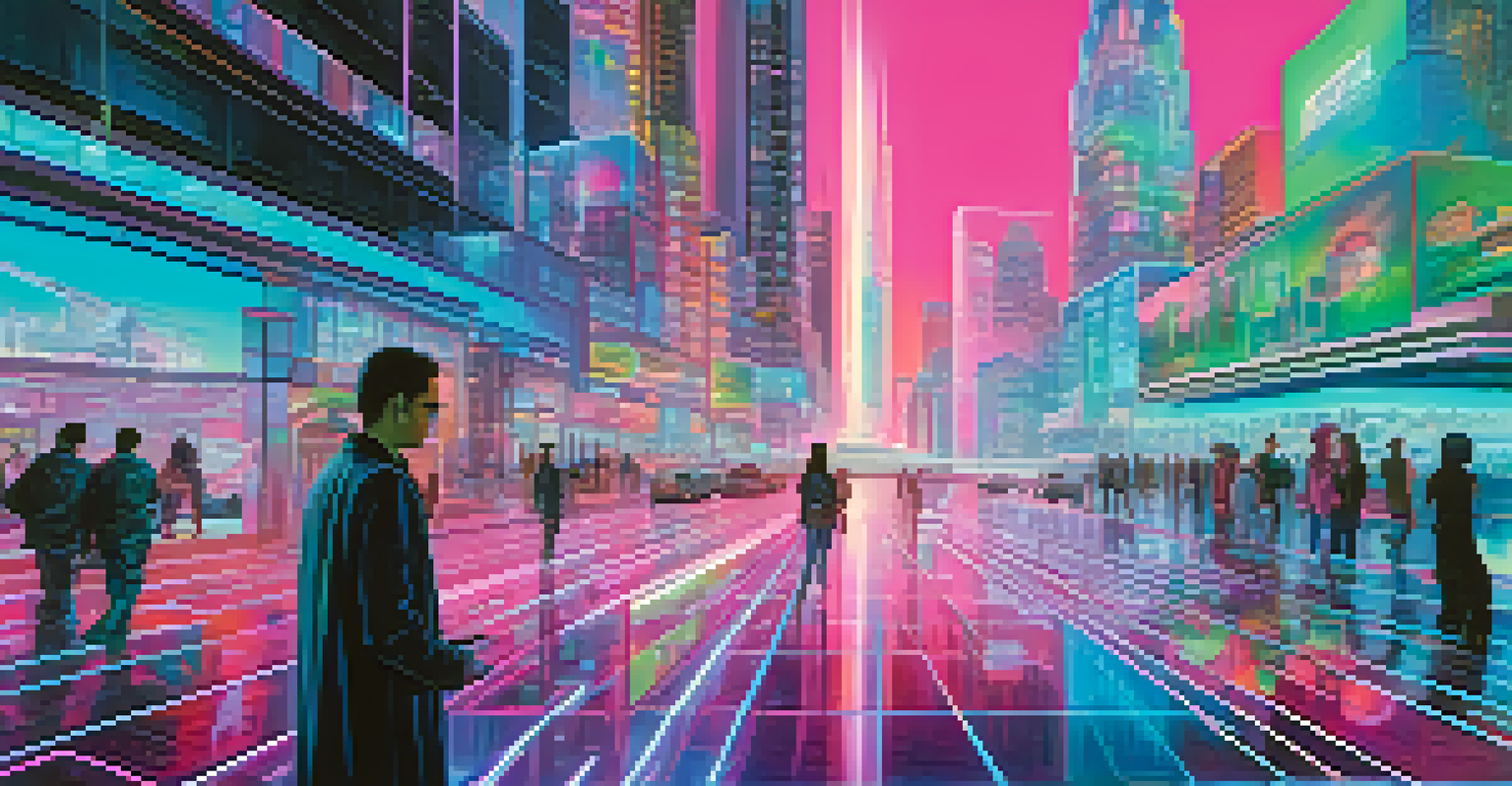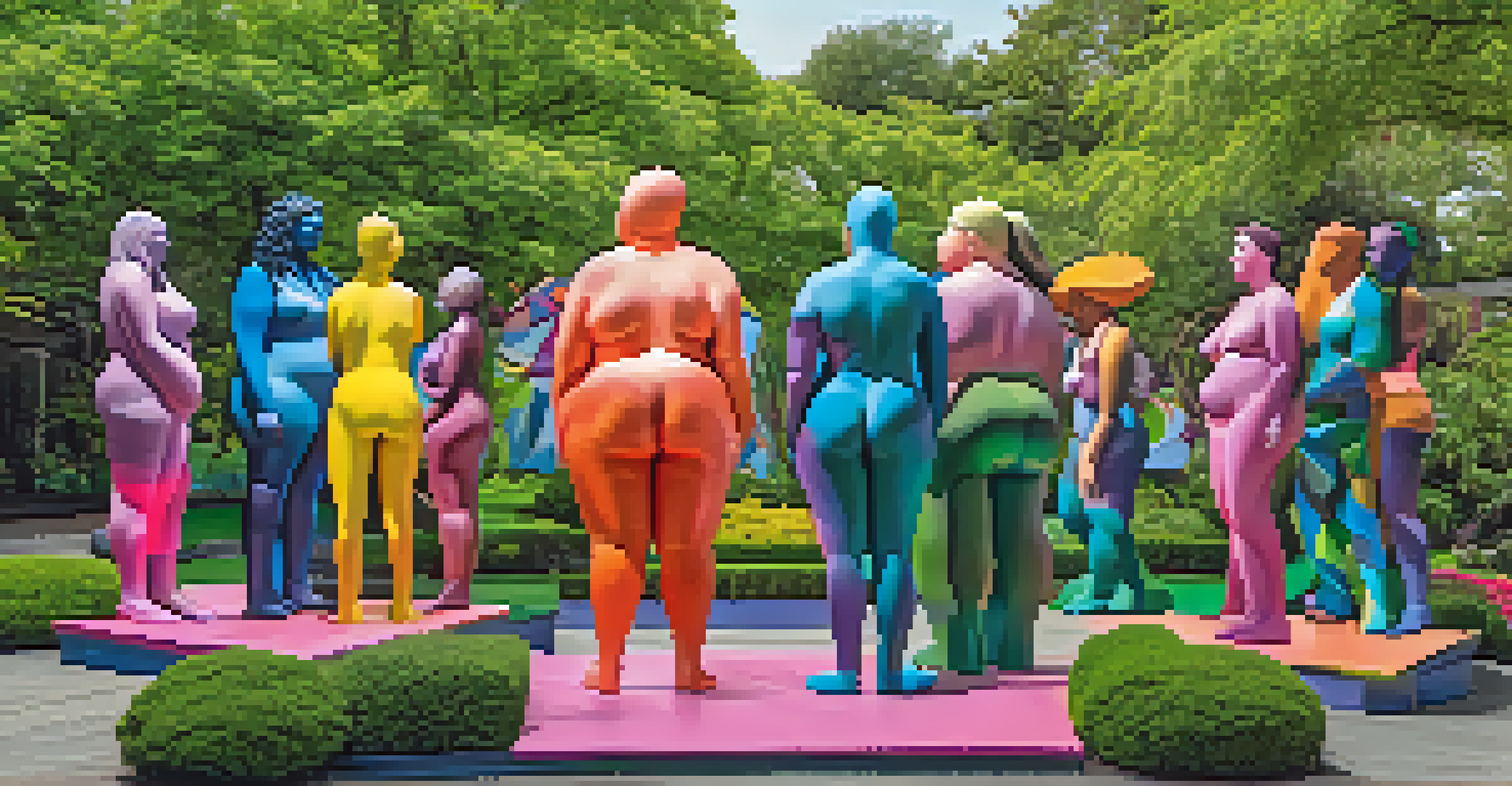Gender and Identity: A Lens for Understanding Modern Art

Understanding Gender and Identity in Art
Gender and identity are pivotal themes in modern art, influencing how artists express themselves and their perspectives. These concepts are not just personal but are also reflective of broader societal changes. Artists often explore their own identities, using their work as a way to challenge stereotypes and provoke thought.
Art is a reflection of society, and society is a reflection of the art.
For instance, contemporary artists like Cindy Sherman use photography to question the roles and expectations placed on women. By transforming her appearance and persona in each piece, she highlights the fluidity of identity itself. This approach invites viewers to consider their own perceptions of gender and identity in art and beyond.
As art continues to evolve, understanding these themes becomes crucial for appreciating the depth of modern works. Engaging with gender and identity allows us to connect with the artist's intent and the cultural context of the piece, enriching our overall experience.
The Role of Feminism in Modern Art
Feminism has significantly influenced modern art, pushing boundaries and advocating for women's voices. The feminist art movement emerged in the late 1960s, challenging the male-dominated art world and bringing attention to women's experiences. Artists began to create works that addressed gender inequality, sexuality, and the female experience.

One notable example is Judy Chicago's 'The Dinner Party,' which celebrates women's contributions to history and culture. This installation invites viewers to reflect on women's roles in society while showcasing their artistic achievements. Such works not only empower women but also encourage discussions about identity and representation.
Art Reflects Gender and Identity
Modern art serves as a mirror to societal changes, allowing artists to express and challenge norms surrounding gender and identity.
Through the lens of feminism, modern art becomes a platform for marginalized voices. By examining works created within this movement, we can better understand the ongoing struggle for equality and how it shapes artistic expression.
Queer Identity and Artistic Expression
Queer identity has emerged as a vital lens in modern art, allowing artists to explore themes of sexuality, gender fluidity, and personal narrative. Artists from the LGBTQ+ community often use their work to challenge traditional norms and express their unique experiences. This exploration fosters a deeper understanding of identity in all its complexities.
The role of the artist is to make the revolution irresistible.
For instance, the works of Keith Haring combine vibrant imagery with social commentary on issues like AIDS and LGBTQ+ rights. His art is not only visually striking but also serves as a powerful statement on the struggles faced by the queer community. By drawing attention to these experiences, Haring's art encourages empathy and understanding.
Incorporating queer identity into modern art opens up conversations about acceptance and representation. It allows viewers to engage with diverse stories, ultimately broadening our understanding of what identity can mean.
Intersectionality: Multiple Identities in Art
Intersectionality plays a crucial role in understanding modern art, as it considers how various identities intersect and influence one another. This concept recognizes that individuals may experience overlapping social identities, such as race, gender, and class, which shape their experiences and perspectives. Artists use intersectionality to reflect the complexities of their identities in their work.
Take the work of artist Kara Walker, for example; she explores race, gender, and historical narratives through her powerful silhouettes. By addressing these intersecting identities, Walker's art prompts viewers to confront uncomfortable truths about race and history. This layered approach adds depth to her pieces, inviting a more nuanced dialogue.
Feminism's Influence on Art
The feminist art movement has played a crucial role in empowering women's voices and addressing gender inequality in artistic expression.
By acknowledging intersectionality in art, we can appreciate the diverse experiences that inform the creative process. This understanding enriches our engagement with the artwork, allowing us to see beyond surface-level interpretations.
Art as a Reflection of Societal Changes
Modern art often reflects the societal changes surrounding gender and identity, acting as a mirror to the evolving cultural landscape. Artists respond to current events, social movements, and shifts in identity politics through their creative expressions. This responsiveness captures the zeitgeist and encourages dialogue about pressing issues.
For instance, the rise of body positivity and inclusivity in recent years has inspired artists to challenge traditional beauty standards in their work. The movement has led to a more diverse representation of bodies in art, embracing various shapes, sizes, and abilities. This shift not only empowers individuals but also fosters a broader acceptance of diverse identities.
As we observe these reflections in modern art, we gain insight into the values and struggles of contemporary society. This connection allows us to engage more deeply with the art and its message, fostering greater awareness and understanding.
The Impact of Technology on Identity in Art
Technology has transformed the landscape of modern art, providing new tools for artists to explore and express their identities. Digital mediums, social media, and virtual reality have opened up avenues for creative exploration, allowing artists to reach wider audiences. These advancements also enable artists to challenge traditional notions of identity and representation.
Consider the rise of digital art and NFTs (non-fungible tokens), where artists can create and sell unique digital works. This new medium allows for innovative expressions of identity, as artists experiment with virtual personas and immersive experiences. By embracing technology, these artists can push the boundaries of how we perceive identity in the digital age.
Intersectionality in Artistic Expression
Intersectionality allows artists to explore the complexities of overlapping identities, enriching the dialogue around race, gender, and history.
As technology continues to evolve, it reshapes the way we understand and engage with identity in art. This ongoing dialogue highlights the importance of adaptability and openness in artistic expression.
The Future of Gender and Identity in Art
As we look to the future, the intersection of gender and identity in art will likely continue to evolve. Emerging artists are increasingly bold in their explorations, using their platforms to challenge norms and inspire change. This evolution reflects a growing awareness of the complexities of identity and the importance of representation.
We may see more collaborations between artists from diverse backgrounds, creating works that celebrate intersectionality and shared experiences. This collaborative spirit can lead to innovative projects that resonate with a broader audience, fostering understanding and empathy.

Ultimately, the future of gender and identity in art is bright, filled with potential for growth and transformation. By embracing these themes, artists can continue to challenge societal norms and inspire conversations that drive change.